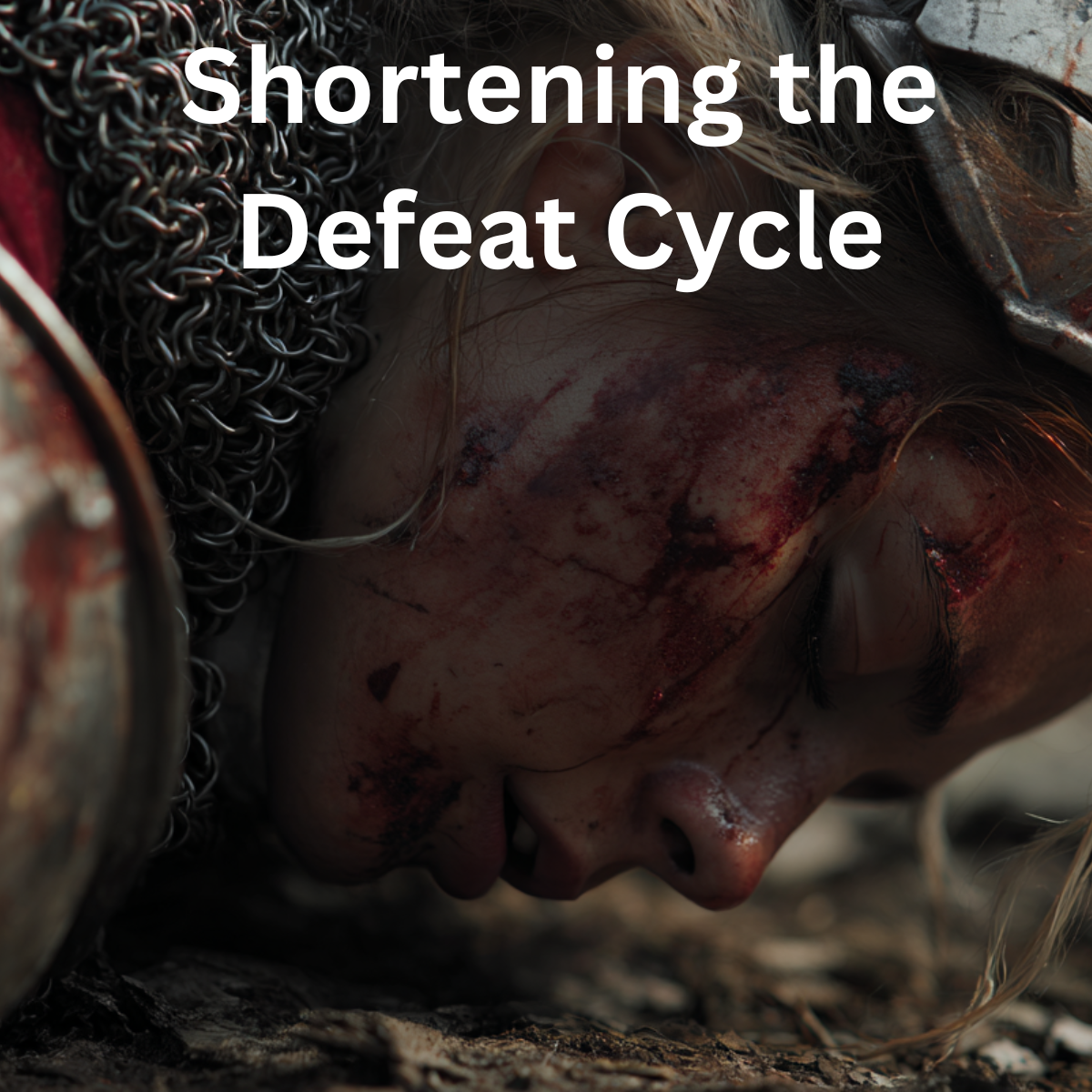I used to think the goal after a failure was to avoid it ever happening again. That meant long postmortems, grand resets, and promises that sounded noble but rarely stuck. What I have learned instead is that progress depends on how quickly I move through the aftermath. The faster I can return to meaningful action with a clearer head and a truer commitment, the better my life goes.
Years ago, I wrote about the five stage arc that follows a miss, which I called the Defeat Cycle. It is a very human sequence, and it shows up everywhere from training plans to family conversations to work projects. The arc looks like this: denial or shock, then pain and emotion, then reflection and learning, then acceptance and recommitment, and finally action again.
The first two stages can ambush you. One moment you are convinced the plan will work, the next you are stunned that it did not. And then the sting arrives. The temptation is to camp in that sting. Replay the scene. Craft explanations. Search for someone to blame, including yourself. I have done all of that. The problem is not the feelings themselves. They are natural and honest. The problem is turning those feelings into a residence.
The pivotal shift happens in stage three. Reflection and learning is where you quietly gather facts, claim what is in your control, and let go of what is not. It is where you ask better questions. What can I do differently today. What was signal and what was noise. Then acceptance and recommitment follow. This is a simple return to first principles. Why did I start. What matters now. Which small steps will rebuild credibility with myself. Finally, you move. No speeches. No drama. Just the next right action.
The goal is not to eliminate the Defeat Cycle, but to shorten it.
The Two Hour Turnaround
When I blow it, I try to run this simple sequence within two hours. Sometimes it takes ten minutes. Sometimes it takes longer. Either way, I aim to complete the loop before the day ends.
- Notice Say out loud, I missed. This interrupts the spiral and ends the bargaining.
- Name Put a few clear words on the feelings. Sad. Frustrated. Embarrassed. Angry. Naming does not fix anything, but it stops the vague fog that keeps you stuck.
- Note Journal a few lines. Answer two questions. What was in my control. What will I do differently next time. Keep it short. Keep it specific.
- Normalize Remind yourself that setbacks do not rewrite the goal. They are part of the path. Recommit to your why in one sentence.
- Next step Take one small, concrete action that proves you are back in motion. Send the email. Prep the shoes. Draft the outline. Lay out the gear for morning. Make the next move so easy you cannot talk yourself out of it.
The trick is speed with honesty. Do not rush past your emotions, but do not decorate them either. Give them a hearing. Then get back to the work.
Five Practices that Make the Cycle Faster
- Evening resets. A brief journal entry, a few slow breaths, and a single prepared action for tomorrow morning. I aim to close the loop before sleep so I can wake ready to try again.
- Tiny wins. Small actions stack. They are easier to sustain and give you the proof you need that change is happening.
- Tracking over talking. Count repetitions. Note minutes. Record pages. Numbers keep you honest and quietly build momentum.
- Accountability in the open. Share your aim with someone who will cheer for effort and ask how it went.
- A bias for iteration. Treat each day as another rep. You are not starting over. You are continuing. Fail fast, learn fast, move fast. The point is not perfection. The point is progress.
Underneath all this is a simple belief. Resilience is a skill. It can be practiced. The more often you close the Defeat Cycle, the more natural it becomes to return to action without the extra drama and delay. That is why I like fail fast as a personal posture. It does not make failure pleasant, and it does not make it the goal. It makes it useful. It turns the miss into the next step.
Let me offer a picture. Imagine two runners on a long trail. Both trip on the same root. One pops back up, checks their stride, and keeps moving. The other sits in the dust, arguing with the root and explaining the tripping to passersby. Which runner finishes stronger. Which one learns where to place their feet tomorrow. We all trip. The practice is to shorten the time in the dust.
If today went sideways, do not wait for a perfect sunrise or a clean slate. Use what you have right now. Notice. Name. Note. Normalize. Next step. Close the loop. Then go again.




